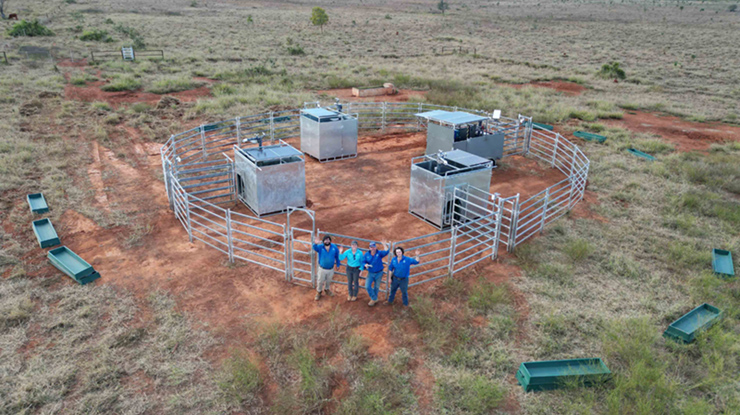 The research team at the Spyglass Beef Research Facility in northern Queensland. Pictured are the GreenFeed methane measurement devices used in the study. Image: Scott Cullen, Queensland Animal Science Precinct.
The research team at the Spyglass Beef Research Facility in northern Queensland. Pictured are the GreenFeed methane measurement devices used in the study. Image: Scott Cullen, Queensland Animal Science Precinct.
Genetic breakthrough opens gate to select for lower emissions
Northern beef producers have long faced the challenge of how to reduce the methane emissions of their extensive herd – but that’s set to change through new research into a genetic solution.
Australia’s northern beef producers are renowned for producing nutritious beef from modest quality pasture. While their southern counterparts have greater access to their herds and can, therefore, take advantage of options such as methane-reducing feed additives, northern producers have had to look elsewhere.
University of Queensland researcher Ben Hayes and his team are developing a genetic solution with sufficient impact and scalability to make meaningful and lasting reduction to methane emissions in the northern cattle industry.
New breeding values
The five-year MLA-supported project, ‘Reducing methane emissions and improving profitability in Northern Australian beef’, is nearing its goal to develop genomic estimated breeding values (GEBVs) specifically for methane production. Producers will soon be able to select for lower methane-producing cattle alongside productivity traits, using these tools as part of their breeding program.
This research has the potential to overcome two key barriers to reduced methane emissions in the north – the sheer numbers of grazing cows and the very extensive conditions in which they graze.
“Current projections are that we will be able to reduce methane by up to 1% per year – if you add that up over 20 years it’s potentially a 20% reduction,” Ben said.
Progress so far
Northern beef producers already recognise the value of genetics, with many using selection for fertility as a tool to improve their herd efficiency. It turns out this also reduces methane/kg of beef produced.
“By increasing how many calves a cow has in her lifetime, you are diluting the cow’s emissions over more kilograms of beef. In addition, fast-growing animals mean you achieve turn-off rates earlier, which also decreases emissions,” Ben said
“By being able to directly select for methane alongside productivity, this new tool will give producers an extra lever to pull.”
Working out how various traits interact and influence production is important to consider when using genetic tools.
“Research suggests you can select for lower emissions without impacting fertility. What is linked, however, is the size of the animal and their methane emissions. If you select purely for methane, you’ll end up with smaller animals – this has been shown in research out of New Zealand.
“To avoid this, we want to select for lower emissions but also select for animals that grow well and produce good liveweights,” Ben said.
Ben emphasises the importance of selecting using an Index – or a collection of traits working in combination together – rather than for distinct traits in isolation.
Taking out the guesswork
A prototype of the tool resulting from this research is due in mid-2026 when it will be tested with project collaborators. It should be available to producers more widely in three years.
“Breakthroughs in this area of science are accelerating now because we are very aware of how to develop these DNA genotype-based tools to support new breeding values for methane,” Ben said.
“We’ve developed genomic breeding values for multiple traits now, so have a good idea of what is required to develop a GEBV for a new trait like methane.”
The project runs through to the end of 2026, with the aim to release new breeding values for methane to include in genetic evaluations and products and services.
|
Steps to reduce methane The outcome of this research is that northern Australia beef cattle breeders will be able to select for reduced methane (CH4) emissions. Here’s how:
|



